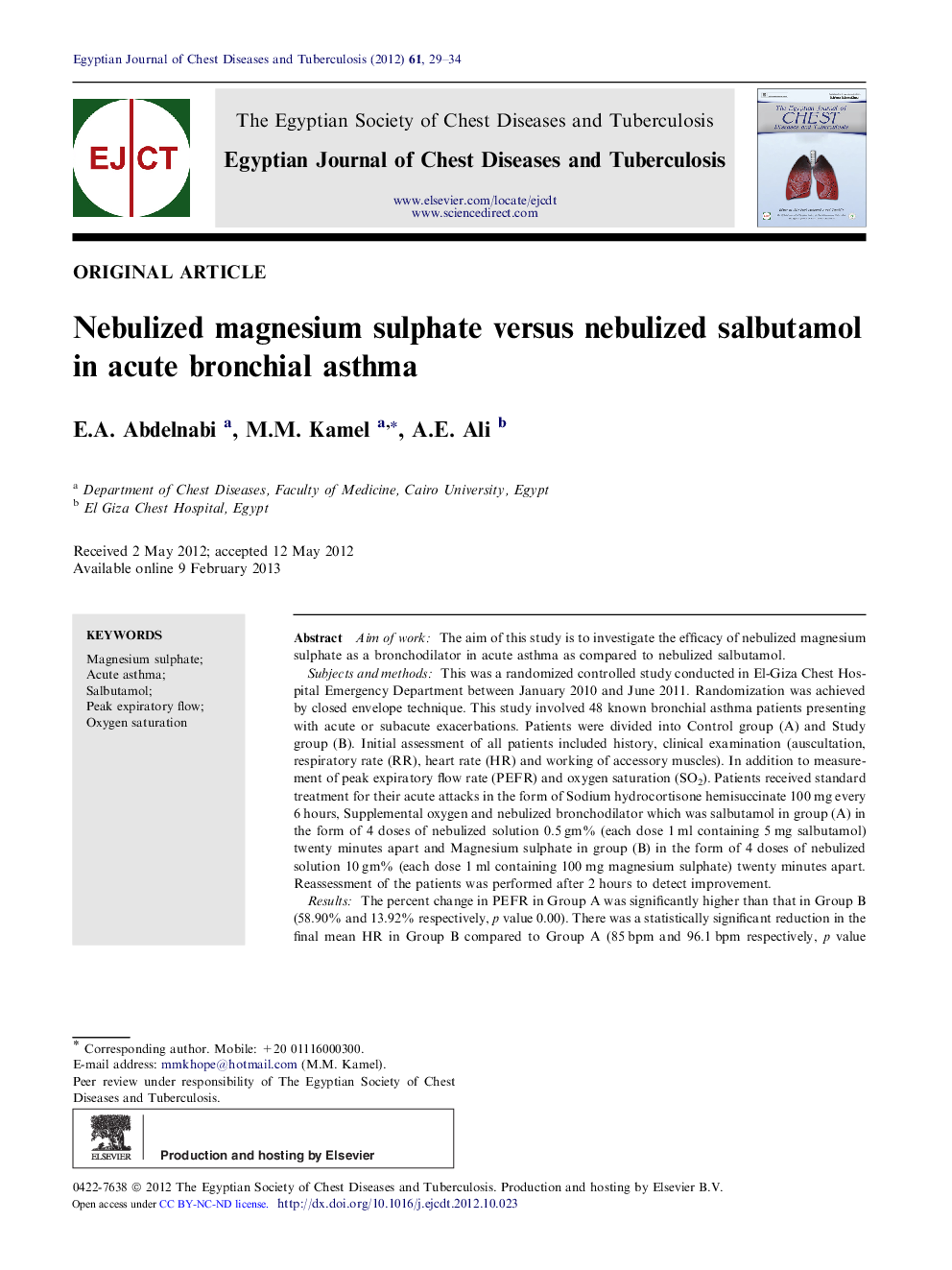| Article ID | Journal | Published Year | Pages | File Type |
|---|---|---|---|---|
| 3400377 | Egyptian Journal of Chest Diseases and Tuberculosis | 2012 | 6 Pages |
Aim of workThe aim of this study is to investigate the efficacy of nebulized magnesium sulphate as a bronchodilator in acute asthma as compared to nebulized salbutamol.Subjects and methodsThis was a randomized controlled study conducted in El-Giza Chest Hospital Emergency Department between January 2010 and June 2011. Randomization was achieved by closed envelope technique. This study involved 48 known bronchial asthma patients presenting with acute or subacute exacerbations. Patients were divided into Control group (A) and Study group (B). Initial assessment of all patients included history, clinical examination (auscultation, respiratory rate (RR), heart rate (HR) and working of accessory muscles). In addition to measurement of peak expiratory flow rate (PEFR) and oxygen saturation (SO2). Patients received standard treatment for their acute attacks in the form of Sodium hydrocortisone hemisuccinate 100 mg every 6 hours, Supplemental oxygen and nebulized bronchodilator which was salbutamol in group (A) in the form of 4 doses of nebulized solution 0.5 gm% (each dose 1 ml containing 5 mg salbutamol) twenty minutes apart and Magnesium sulphate in group (B) in the form of 4 doses of nebulized solution 10 gm% (each dose 1 ml containing 100 mg magnesium sulphate) twenty minutes apart. Reassessment of the patients was performed after 2 hours to detect improvement.ResultsThe percent change in PEFR in Group A was significantly higher than that in Group B (58.90% and 13.92% respectively, p value 0.00). There was a statistically significant reduction in the final mean HR in Group B compared to Group A (85 bpm and 96.1 bpm respectively, p value 0.011). There was a significant reduction in mean final RR in Group A compared to Group B (22.17 bpm. and 25 bpm respectively, p value 0.002).There was a significant increase in oxygen saturation (SO2) in both groups.ConclusionThe use of MgSO4 by nebulization in patients with acute asthma attacks results in improvement of clinical condition, increase in peak expiratory flow rate (PEFR), reduction in heart rate (HR), reduction in respiratory rate (RR) and improvement in oxygen saturation (SO2). The increase in PEFR (bronchodilatory effect) was significantly less than that achieved in patients receiving the usual treatment with Short acting β2 agonists, e.g. salbutamol, when either agents were used alone.
